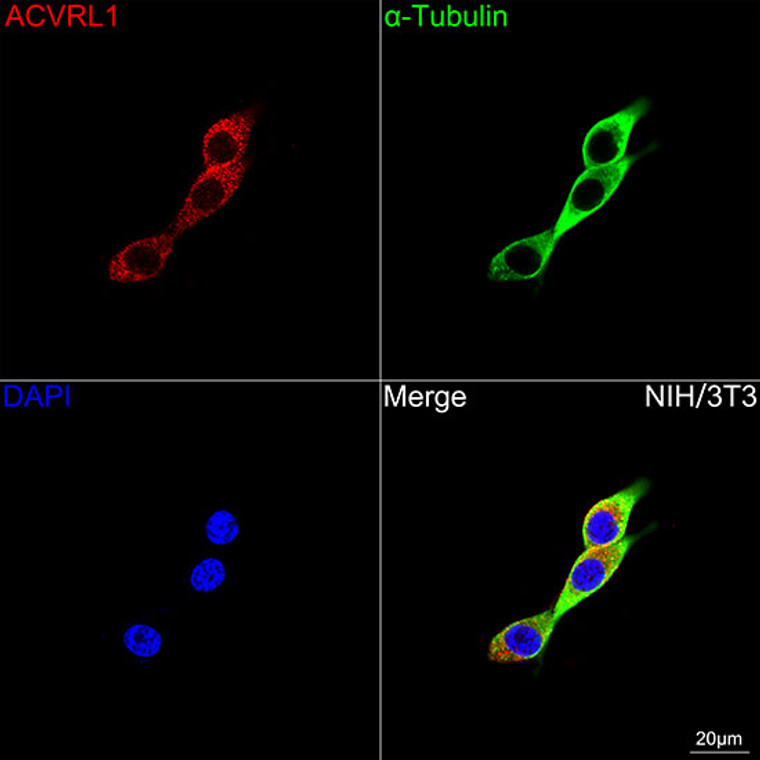| Host: |
Rabbit |
| Applications: |
WB/IF |
| Reactivity: |
Human/Mouse/Rat |
| Note: |
STRICTLY FOR FURTHER SCIENTIFIC RESEARCH USE ONLY (RUO). MUST NOT TO BE USED IN DIAGNOSTIC OR THERAPEUTIC APPLICATIONS. |
| Short Description: |
Rabbit monoclonal antibody anti-ACVRL1 (404-503) is suitable for use in Western Blot and Immunofluorescence research applications. |
| Clonality: |
Monoclonal |
| Clone ID: |
S1MR |
| Conjugation: |
Unconjugated |
| Isotype: |
IgG |
| Formulation: |
PBS with 0.02% Sodium Azide, 0.05% BSA, 50% Glycerol, pH7.3. |
| Purification: |
Affinity purification |
| Dilution Range: |
WB 1:500-1:1000IF/ICC 1:50-1:200 |
| Storage Instruction: |
Store at-20°C for up to 1 year from the date of receipt, and avoid repeat freeze-thaw cycles. |
| Gene Symbol: |
ACVRL1 |
| Gene ID: |
94 |
| Uniprot ID: |
ACVL1_HUMAN |
| Immunogen Region: |
404-503 |
| Immunogen: |
A synthetic peptide corresponding to a sequence within amino acids 404-503 of human ACVRL1 (P37023). |
| Immunogen Sequence: |
VLWEIARRTIVNGIVEDYRP PFYDVVPNDPSFEDMKKVVC VDQQTPTIPNRLAADPVLSG LAQMMRECWYPNPSARLTAL RIKKTLQKISNSPEKPKVIQ |
| Function | Type I receptor for TGF-beta family ligands BMP9/GDF2 and BMP10 and important regulator of normal blood vessel development. On ligand binding, forms a receptor complex consisting of two type II and two type I transmembrane serine/threonine kinases. Type II receptors phosphorylate and activate type I receptors which autophosphorylate, then bind and activate SMAD transcriptional regulators. May bind activin as well. |
| Protein Name | Serine/Threonine-Protein Kinase Receptor R3Skr3Activin Receptor-Like Kinase 1Alk-1Tgf-B Superfamily Receptor Type ITsr-I |
| Database Links | Reactome: R-HSA-201451 |
| Cellular Localisation | Cell MembraneSingle-Pass Type I Membrane Protein |
| Alternative Antibody Names | Anti-Serine/Threonine-Protein Kinase Receptor R3 antibodyAnti-Skr3 antibodyAnti-Activin Receptor-Like Kinase 1 antibodyAnti-Alk-1 antibodyAnti-Tgf-B Superfamily Receptor Type I antibodyAnti-Tsr-I antibodyAnti-ACVRL1 antibodyAnti-ACVRLK1 antibodyAnti-ALK1 antibody |
Information sourced from Uniprot.org
12 months for antibodies. 6 months for ELISA Kits. Please see website T&Cs for further guidance












